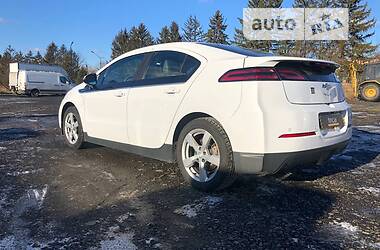

Type of vehicle: Front-wheel-drive mid-sized hatchbackĭrivetrain: Lithium ion battery, electric motor and 1.4L four-cylinder The fact the Volt drives like a normal car is its other endearing trait. The Chevrolet Volt is, arguably, the most sophisticated car on the road at the moment - it is clean, efficient and the manner in which it uses its electric/gas combination to eliminate range anxiety represents the near-term solution to the electrification of the automobile. Thankfully, there is a backup camera - a $795 option! It not only needs a wiper because of its very lazy lie, it splits the rearward view in two. Second, the charge time without a 240-volt outlet is long - 12 hours using 110 volts. This mandates using the less efficient comfort setting.

Below that temperature, your buns toast, but your toes freeze. As long as the outside temperature is above 10C it works - the strategy relies on the optional heated seats to keep the occupants cozy. If you want to maximize the driving range/fuel mileage, you must select the climate control’s economy setting. In the end, keeping the ball all leafy became like playing Angry Birds - it is addictive, but it’s a good thing in this instance. Accelerate and the ball drops, loses its leaves and changes colour and it does the opposite during regenerative braking. Balance the ball at the mid-point of the scale and you are attaining the best economy. The instrumentation is equally out there - to the left of the speedometer is a ball wrapped in leaves. The seven-inch screen at the top of the stack functions in the same manner. The white-faced centre stack is iPad-like in that one simply touches an icon to access that feature. Where the Volt differs is that basically all functions are controlled by touch. True, this does not take into account the cost of recharging the battery, but it is, nonetheless, the lowest average fuel economy I have ever recorded.Īs for the rest of it, the Volt is near normal - there is seating for five and 10.6 cubic feet of cargo space beneath the hatchback. However, another 30 km in the city, where the battery and buffer pay the biggest dividend, and the end result was a 1,000-km average of 4.1 L/100 km. At first blush, that’s not overly impressive.


The combination delivers a 9.8-second run to 100 km/h and an 80-to-120-km/h passing time of 7.4 seconds.Īfter driving to Detroit and back, a highway-based round trip of 700 km, I had averaged 5.9 L/100 km. The secret lies in the torque - the electric motor twists out 273 pound-feet from Rev One. I say surprising because the numbers at play are not exactly standouts - the electric motor produces just 150 horsepower, which is not much for a car that weighs 1,715 kilograms. Get on the accelerator and the Volt pulls off the line surprising crisply. Push the start button and a high-tech sound signals you are ready to go. That’s the techy overview - the manner in which the Volt operates is far simpler. It is this extension that allows the Volt to pull away electrically, and run to 50-plus km/h, even when the instrumentation says there’s zero kilometres of driving range left. This is used to store the electrical energy captured through regenerative braking and the excess power developed by the generator. Article contentįurthering the economy/driving range cause is a buffer that’s contained in the main battery. This advertisement has not loaded yet, but your article continues below.


 0 kommentar(er)
0 kommentar(er)
